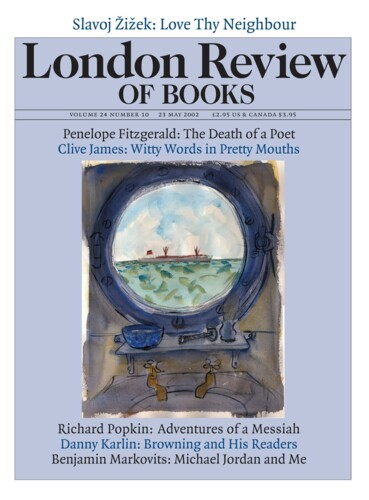Cod ethnography is a less popular subject in primary schools these days than it once was, but not so many years ago a surprising number of seven-year-olds seemed to ‘know’ that Red Indians would say ‘How’ when greeting each other, and that Eskimos kiss by rubbing noses. (In a recent poll of under-tens, three out of three had no idea about either of these things; one, when given a clue – a raised hand salute – ventured that Red Indians might greet each other with ‘Heil Hitler.’) An equivalent factoid I picked up in elementary geography lessons is that there are sheep farms in Australia the size of Wales. I wondered if Australian schoolchildren learned that there are countries in Europe the size of sheep farms. Knowing Wales is a valid unit of area (equivalent to 20,770 km2) is much more useful than being prepared to rub noses north of the Arctic Circle. Here are some uses: the Amazon rainforest is being cleared at the rate of a Wales a year; the largest crater on the Moon is three times the size of Wales. When that piece of Antarctica came adrift earlier this year, it was immediately, automatically even, said to be the size of Wales, and only later revealed to be closer to the size of Cambridgeshire (about a sixth the size of Wales). So it comes as no surprise to learn that a nature reserve for woolly mammoths, in order to sustain a viable population, would have to be the size of Wales (see Richard Fortey’s article in this issue). A handy website, www.simonkelk.co.uk/sizeofwales.html, has a ‘Walesometer’ for converting hectares/acres/square miles/square kilometres into Waleses. It shouldn’t be too long before EU harmonisation will necessitate replacing Wales with Belgium, which will give Europhobes something else to grumble about over their black pudding. Outside the UK, multiples of Wales aren’t very meaningful; Americans, for example, are more likely to speak in terms of fractions of Texas, a place which has the very great advantage of being bigger than everywhere else.
If you took every unread copy of Don Quixote in the world and laid them all out on the ground, they would cover an area the size of Wales. Nonetheless, Cervantes’s romance has been voted the best book ever by a bunch of writers – a hundred or so well-known authors from 54 countries, not including Isabel Allende, Bob Dylan or Gabriel García Márquez, who admirably declined to vote. The Guardian did a vox pop. New Puritan about town Nicholas Blincoe rather proudly let slip that he’s read 81 of the top 100; smashing Mark Lawson (69) into a measly second place. ‘I think the list is pompous,’ Blincoe said. ‘Authors really do think they are fantastically clever and I think this list reflects the high opinion they have of themselves.’ Indeed. Chris Woodhead is ‘surprised by Don Quixote. I don’t think it’s as good as many of the others on the list.’ Perhaps even more surprising than Don Quixote topping the bill is the former Chief Inspector of Schools casting doubt on the validity of a league table. No one seems to have questioned the point of compiling the list, but that’s probably because there isn’t one. At least, there isn’t one so long as we discount the logic of publicity and sales. Announcing the results in Oslo, where the thing was organised, Ben Okri told his audience: ‘If there is one novel you should read before you die, it is Don Quixote.’ Particularly if you’re a moribund Norwegian, since Okri has contributed an introduction to the latest Norwegian edition of the book. Still, if the poll prompts more people to pick up one of those unread copies of Don Quixote and read it – enough people, say, to reveal a patch of earth the size of Cambridgeshire – then that would be no bad thing.
Send Letters To:
The Editor
London Review of Books,
28 Little Russell Street
London, WC1A 2HN
letters@lrb.co.uk
Please include name, address, and a telephone number.

